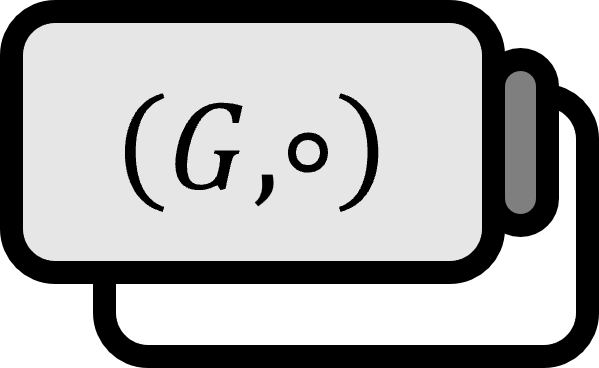Uniqueness Proof of Identity Elements and Inverse Elements in groups
Theorem 1
For a group $\left<G, \ast \right>$, the identity element $e$ that satisfies $e \ast x = x \ast e = x$ for all elements $x$ of $G$ is unique. For any element $a$ of $G$, the inverse element $a^{\prime}$ that satisfies $a \ast {a^{\prime}} = {a^{\prime}} \ast a = e$ is unique with respect to $a$.
Explanation
Though everyone takes it for granted, the definition of a group only mentions their existence, not uniqueness. That such elements exist uniquely requires proof.
Proof
Strategy: As usual when proving uniqueness, proof by contradiction is used.
Part 1. Identity Element
Let’s assume there exists another identity element $e^{\prime}$ besides $e$. Since $e$ is an identity element, $$ e \ast\ e^{\prime} = e^{\prime} \ast\ e = e^{\prime} $$ holds. Meanwhile, $e^{\prime}$, being an identity element as well, $$ e^{\prime} \ast\ e = e \ast\ e^{\prime} = e $$ holds. Hence, $e = e^{\prime}$, this contradicts the assumption $e \ne e^{\prime}$.
Part 2. Inverse Element
Similarly, let’s assume there exists a different inverse element $a^{\prime \prime}$ other than $a^{\prime}$ for $a$. Then, $a^{\prime} \ast\ a = e$ and $a^{\prime \prime} \ast\ a = e$, leading to $a^{\prime} \ast\ a = a^{\prime \prime} \ast\ a$.
Cancellation Law: For an element $a,b,c$ of a group $\left<G, \ast \right>$, $$ a \ast b = a \ast c \implies b = c \\ b \ast a = c \ast a \implies b=c $$
By the cancellation law, $a^{\prime} \ast\ a = a^{\prime \prime} \ast\ a$ implies $a^{\prime} = a^{\prime \prime}$.
This contradicts the assumption $a^{\prime} \ne a^{\prime \prime}$.
■
Fraleigh. (2003). A first course in abstract algebra(7th Edition): p32, 42. ↩︎
